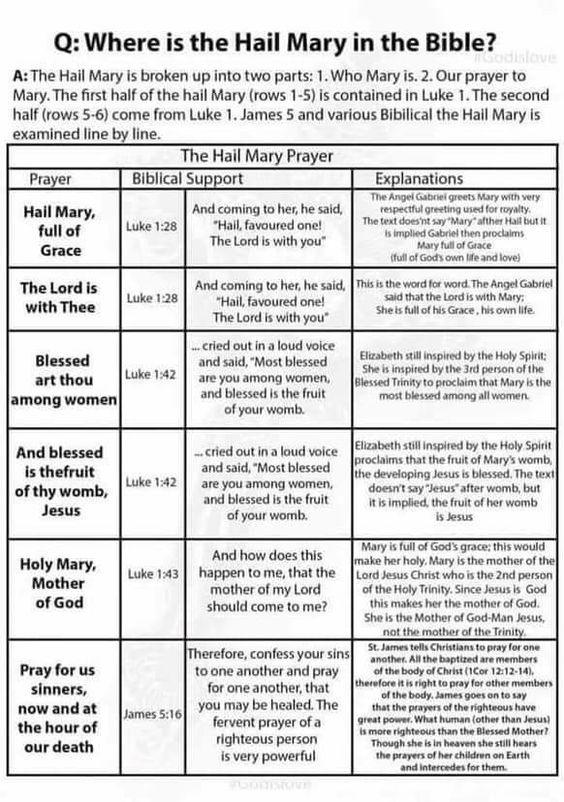
The “Hail Mary” is one of the most cherished prayers in the Catholic tradition, often recited during the Rosary and in times of personal devotion. But have you ever wondered about its origins? Is the “Hail Mary” actually found in the Bible? Let’s dive into Scripture to explore the biblical roots of this beautiful prayer.
The First Part: “Hail Mary, Full of Grace, the Lord is with Thee”
The opening line of the “Hail Mary” prayer is directly drawn from the Gospel of Luke. In Luke 1:28, the angel Gabriel greets Mary with these words:
“And he came to her and said, ‘Hail, full of grace, the Lord is with you!’”
— Luke 1:28 (RSVCE)
In this verse, the angel’s greeting “Hail” (or “Rejoice” in some translations) reflects a deep honor and reverence towards Mary. The phrase “full of grace” signifies that Mary is uniquely graced by God, chosen to be the mother of the Savior. This is not just a simple greeting but a divine affirmation of Mary’s special role in salvation history.
The Second Part: “Blessed Art Thou Among Women, and Blessed is the Fruit of Thy Womb, Jesus”
The second part of the “Hail Mary” is also found in Luke’s Gospel, specifically during the Visitation, when Mary visits her cousin Elizabeth. Upon seeing Mary, Elizabeth, filled with the Holy Spirit, exclaims:
“And she exclaimed with a loud cry, ‘Blessed are you among women, and blessed is the fruit of your womb!’”
— Luke 1:42 (RSVCE)
Elizabeth’s words acknowledge the blessedness of Mary as the mother of the Messiah. Her greeting, inspired by the Holy Spirit, further confirms Mary’s unique role in God’s plan. The “fruit of thy womb” explicitly refers to Jesus, highlighting the significance of His Incarnation.
The Third Part: “Holy Mary, Mother of God, Pray for Us Sinners, Now and at the Hour of Our Death”
This final part of the prayer, while not a direct biblical quote, is a natural extension of the Scriptural references to Mary. The title “Mother of God” is rooted in the understanding of Mary as the Theotokos, a Greek term meaning “God-bearer.” This title was formally affirmed at the Council of Ephesus in 431 AD, based on the truth that Jesus is both fully God and fully man.
The request for Mary’s intercession, “Pray for us sinners, now and at the hour of our death,” reflects the Catholic belief in the Communion of Saints. As Christians, we believe that those who are in heaven, particularly Mary, can intercede for us before God. This concept is supported by Scripture in passages such as:
“The prayer of a righteous person is powerful and effective.”
— James 5:16 (NIV)
Since Mary is the most exalted of all saints, Catholics seek her intercession, especially at the critical moments of life and death.
Conclusion: A Prayer Rooted in Scripture and Tradition
While the “Hail Mary” prayer as we know it today is not found verbatim in the Bible, its components are deeply rooted in Scripture. The first two parts are direct quotations from the Gospel of Luke, while the third part reflects the early Church’s understanding of Mary’s unique role and the power of intercessory prayer.
The “Hail Mary” serves as a reminder of God’s grace, the mystery of the Incarnation, and the powerful intercession of the Blessed Virgin Mary. It is a prayer that has echoed through the centuries, drawing believers closer to Jesus through His Mother, who is indeed “full of grace.”






Leave a Reply